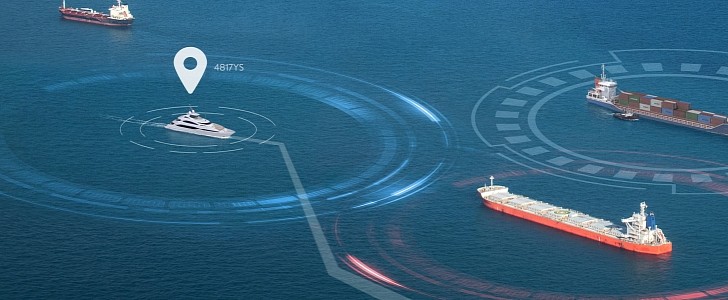One of the many ways of potentially transforming maritime transportation into a green sector is by implementing next-generation technology onboard vessels capable of optimizing routes and fuel consumption, which in turn leads to lower CO2 emission levels. The ships of the future may be ones that can conduct autonomously-controlled voyages routinely, with a focus on efficiency.
In October 2021, an apparently simple tug successfully completed the world’s first autonomous 1,000-nautical mile voyage. The record-breaking Nellie Bly conducted a roundtrip from Hamburg, Germany, around Denmark while being controlled by an office in Boston, U.S., 3,000 nautical miles (3,450 miles/5,555 km) away.
The successful voyage was also an important confirmation for the mtu Nautiq Cooperate system, one of the new technologies developed by Rolls-Royce together with Sea Machine Robotics.
Rolls-Royce announced its collaboration with Sea Machine Robotics for the development of the autonomous vessel control system in September 2021 and has now added three new products to that range. Each offers a different level of pilot assistance, remote command, and autonomous control.
The mtu Nautiq Cooperate, which allowed Nellie Bly to complete its pioneering journey, is the medium option in the new range. It can take over routine tasks onboard, allowing crew members to focus on the more important tasks. This system is designed for off-boat remote command, including all the payloads on the ship.
The most advanced option is an intelligent pilot assist system, the mtu Nautiq CoPilot. According to Rolls-Royce, it can autonomously control an entire planned voyage, from start to finish. But it can also not intervene at all and only act as a guide for the operator.
It incorporates advanced sensors, AI algorithms, embedded electronic charts, and a top-level computer vision system that claims to be the world’s best. By enabling a very high degree of precision and predictability, this technology helps save fuel and reduce costs. While Rolls-Royce is also working on alternative propulsion systems for ships, this autonomous navigation system is an important step for making shipping climate-friendly.
The successful voyage was also an important confirmation for the mtu Nautiq Cooperate system, one of the new technologies developed by Rolls-Royce together with Sea Machine Robotics.
Rolls-Royce announced its collaboration with Sea Machine Robotics for the development of the autonomous vessel control system in September 2021 and has now added three new products to that range. Each offers a different level of pilot assistance, remote command, and autonomous control.
The mtu Nautiq Cooperate, which allowed Nellie Bly to complete its pioneering journey, is the medium option in the new range. It can take over routine tasks onboard, allowing crew members to focus on the more important tasks. This system is designed for off-boat remote command, including all the payloads on the ship.
The most advanced option is an intelligent pilot assist system, the mtu Nautiq CoPilot. According to Rolls-Royce, it can autonomously control an entire planned voyage, from start to finish. But it can also not intervene at all and only act as a guide for the operator.
It incorporates advanced sensors, AI algorithms, embedded electronic charts, and a top-level computer vision system that claims to be the world’s best. By enabling a very high degree of precision and predictability, this technology helps save fuel and reduce costs. While Rolls-Royce is also working on alternative propulsion systems for ships, this autonomous navigation system is an important step for making shipping climate-friendly.







